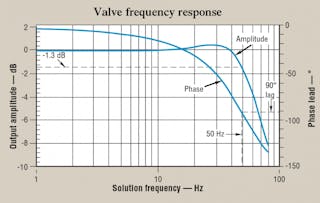- Joined
- Jan 15, 2020
- Messages
- 6,895
- Likes
- 16,896
Imho quite a good read.
https://audioxpress.com/article/zero-phase-in-studio-monitors
https://audioxpress.com/article/zero-phase-in-studio-monitors
That's pretty much the bottom line. Correction to linear phase is the icing on the cake once everything else is done competently and the nice thing it is almost zero cost.Anyways, I agree with Putzeys. It's stupid to trade off other things for phase correction, but if it doesn't cost anything, why not?
Sorry, but that's got nothing to do with it. It's like saying frequency reponse doesn't matter just because in the studio every single instrument and vocal track was subjcted to a hell of EQ'ing...nor is it likely to be important on a stereo mix down from multiple channels since this won't have any phase relevance anyway.
No it isn't. It is nothing like FR at all.Sorry, but that's got nothing to do with it. It's like saying frequency reponse doesn't matter just because in the studio every single instrument and vocal track was subjcted to a hell of EQ'ing...

Imho quite a good read.
https://audioxpress.com/article/zero-phase-in-studio-monitors
It turns out that, for perfectly logical reasons, humans are not responsive to phase (i.e., waveforms), whether they are Beethoven, step functions, square waves, etc. A lot of highly motivated researchers have investigated this.
Your ITD thesis was enough discussed here, no need to start it all over again:there is not know if they can hear ITD or not.

 www.audiosciencereview.com
www.audiosciencereview.com
Your ITD thesis was enough discussed here, no need to start it all over again:

step response is a important part to show speed of speaker that is good enough for ITD. See measures
I measure a headphone with Low Pass Filter 6 or 12 db at 1.5 khz to simulate a crossover. I do the test also with Phase linear filter, but it change not much in step response so i do not upload the results. there can see the headphone with the simulate crossover is much more faster as the...www.audiosciencereview.com
You were given enough answers in that thread, but the discussion was not fruitful so the thread was locked.when you quote text that say phase is not important, then of course the answer to this is same. you and some other that write often in this forum seem the opinion what i write is wrong but then you should explain when phase is not important how can hear ITD ?
You were given enough answers in that thread, but the discussion was not fruitful so the thread was locked.
That link can be translated by anyone by with his browser https://www-hifi--wiki-de.translate..._sl=de&_x_tr_tl=en&_x_tr_hl=de&_x_tr_pto=wapp and mixes some known facts like the correlation of the shape of the step response to the amplitude/bandwith of the frequency response with some wrong and unproved assumptions, from what I see from the imprint it is a private page where no author is shown or open editing/commenting is allowed like in the real wiki.This link about the step response explain https://www.hifi-wiki.de/index.php/...rungantworten_-_Beispiele_aus_der_Messtechnik was not in the thread from me you link. maybe you read it too. as far i notice you are german and maybe you can translate that or do you think this is wrong ?
Literally speaking, yes I also agree.Anyways, I agree with Putzeys. It's stupid to trade off other things for phase correction, but if it doesn't cost anything, why not?
from what I see from the imprint it is a private page where no author is shown or open editing/commenting is allowed like in the real wiki.
As it has been said the frequency response plot is a more expedient representation for such, as an example for a moving object someone could show the acceleration time function to indirectly show the velocity (by integrating it), but its easier to read the velocity plot directly.on this page stand too that step response show time. and the frequency a speaker can reach depend on the rise and fall time and the linearity of this.
As above because often the representation in time domain might be more expedient, that doesn't mean there cannot be a frequency response plot:step repsonse is also important measure for hydraulic systems. for hydraulic systems there is no frequency diagram show

